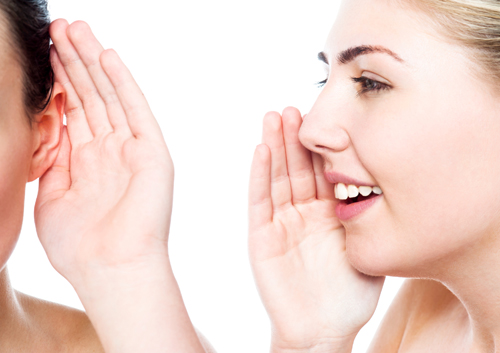April 12th, 2022

Well, of course you can chew gum and wear braces. But, should you chew gum and wear braces? That can be a sticky question.
For many years, the answer was a firm “No.” Not only did our favorite chewables literally gum up the (dental) works, but they were filled with loads of the sugar that cavity-causing bacteria love to feed on. The result? A much better chance of damage to your orthodontic work, and a higher risk of cavities near your brackets and wires.
But times, and gum recipes, change. Today’s sugar-free gum provides us with some new ideas to chew over.
- Sugarless gum is much less sticky than regular gum, so it is much less likely to stick to your appliance. If there is any chance that gum will damage your wires or brackets, we’ll let you know that it’s best to wait until your braces are off to indulge.
- Some orthodontic patients find that their jaws and ligaments are less sore if they chew gum for a few minutes after an adjustment.
- Most important, studies suggest that chewing sugarless gum might actually help prevent cavities from forming. How is that possible?
Because chewing gum increases our production of saliva! Okay, we don’t normally find saliva an exciting, exclamation-point-worthy topic, but let’s look at the dental benefits:
- Saliva washes away food particles and bacteria. And because braces can trap food when we eat, it’s great to have some help washing away any meal-time souvenirs.
- Saliva helps neutralize acids in the mouth. The acids found in foods and produced by oral bacteria lead to cavities, so diluting and neutralizing their effects provide important protection for our enamel.
- Saliva helps bathe the teeth in minerals that can actually rebuild weakened enamel. Acids in the mouth attack minerals in the enamel such as the calcium and phosphate that strengthen our teeth. Fortunately, saliva provides calcium, phosphate, and fluoride that can actually help rebuild weakened enamel.
So, should you chew gum and wear braces? The real question is, should you chew gum while you’re in braces? Dr. Steven Speaker and our team are more than happy to provide the right answer for you! Talk to us at your next visit to our Beaumont, TX office about the potential benefits and drawbacks of dentist-approved sugarless gum. Depending on the kind of gum you choose and the kind of orthodontic work you are having done, the answer just might surprise you.
April 5th, 2022

You've made an investment on spending money on getting braces, so why not keep your teeth in good health while undergoing orthodontic treatment? Dr. Steven Speaker and our team at Acadiana Orthodontics will tell you it is just as important to develop a regular hygiene routine while you're wearing braces as you did before proceeding with treatment.
Flossing is essential to the health of your teeth and gums when you're wearing braces. Because braces may hold food, sugars and liquids upon eating, it is very important to keep on top of your brushing and flossing, as well as visiting our office for regular adjustments.
While we know it's tough enough to get kids to floss daily without braces, that battle becomes even tougher when braces are involved. Remember that by not flossing, you will become more prone to cavities and gum disease during your treatment.
When flossing, remember to gently massage your gums in between the teeth. You will find that flossing with braces takes extra time, as you will have to weave the floss through each bracket. When flossing, there should be no signs of blood. If you see blood, you are not flossing enough or properly.
Using an electric toothbrush is also a good idea to massage your gums before or after flossing as electric toothbrushes can help remove any harmful bacteria that are lingering in your mouth. And don't forget to add a mouthwash to your routine to break up any bacteria that has formed. A good mouthwash will help keep your teeth and gums in good shape during your treatment.
If you have any questions about flossing or your orthodontic treatment at Acadiana Orthodontics please don't hesitate to give us a call or during your next adjustment appointment!
March 30th, 2022

You want a beautiful smile that you feel proud of, but you’re not eager to give up your favorite foods for a few years during treatment with braces. If that describes you, In-Ovation self-ligating braces may be worth considering. Since treatment times with In-Ovation are significantly shorter than with traditional braces, you can get back to eating all your favorite foods much faster.
One of the challenging parts about getting braces is not being able to fit in. Traditional metal braces stand out in a crowd, but In-Ovation braces are smaller and have a lower profile, making them much more discreet. While you'll have to give up some foods, especially anything hard or crunchy, it won't be forever.
A Generally Healthy Diet
When life gets hectic, it’s easy to forget about your diet. That’s a mistake you don’t want to make while you’re getting your teeth straightened. Even though you’re working on obtaining a beautiful smile with In-Ovation, you need to eat a healthy diet so that your oral and overall health stay good. For example, consume plenty of calcium, such as from low-fat dairy products, to support strong bones and healthy teeth.
Timing Your Eating
Just like it is when you don’t have braces, it’s important to think about the times that you eat and drink when you have In-Ovation braces. When carbohydrates sit on your teeth for too long, bacteria in your mouth ferment them and produce acid that can wear away at your teeth and eventually cause tooth decay.
The following tips can help you avoid this problem:
- Don’t eat hard candy or lollipops, since the sugar will be on your teeth for long periods of time.
- Rinse your mouth out with water after you eat anything.
- Brush your teeth after each meal.
- Don’t drink sugary sodas, since the sugar will get all over your teeth.
Getting straighter teeth with In-Ovation is exciting, but you do have to take extra caution when eating, and make sure you take good care of your general oral health while you're at it. At least with In-Ovation's efficient self-ligating technology, you'll be back to eating popcorn and chewing gum in no time!
March 23rd, 2022

The stereotypical braces wearer – in middle school, with a mouth full of metal brackets – has led to numerous myths about orthodontics that discourage many people from getting the dental care they need. Dr. Steven Speaker and our staff would like to put some of these myths to rest.
Myth 1: Orthodontic treatment is for kids. Although teenagers often visit the orthodontist to get braces, adults represent a growing proportion of orthodontic patients. Whether you’re eight or 80, a consultation with an orthodontist can identify problems with your teeth, jaws, or bite that can be corrected by orthodontic interventions.
Myth 2: Traditional, metal braces are my only option. Advances in orthodontic technology have rendered improved braces and other orthodontic appliances that are much less noticeable than the braces of yesteryear. Ask Dr. Steven Speaker about Invisalign® braces and other options that make sense for your situation.
Myth 3: Orthodontic treatment is only helpful for crooked teeth. Sure, a crooked smile is a common reason that patients seek orthodontic care. However, orthodontic interventions help with a range of dental health problems. From missing teeth to overbite to jaw misalignment, your orthodontist can help with many problems associated with the teeth, gums, and jaws.
Myth 4: Orthodontic treatment is too expensive. As with any medical procedure, orthodontics can be pricey. However, our Beaumont, TX team works with patients to find payment plans, insurance coverage, or other payment options that reduce the financial burden.




